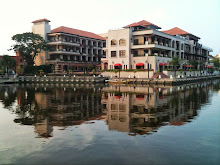Juran defined quality as
(1) product performance that results in customer satisfaction;
(2) freedom from product deficiencies, which avoids customer dissatisfaction-- simply summarized as "fitness for use."
This definition can be broken down into four categories:
(1) quality of design,
(2) quality of conformance,
(3) availability and
(4) field service.
Quality of design concentrates on market research, the product concept, and design specifications.Quality of conformance includes technology, manpower, and management.
Availability focuses on reliability, maintainability, and logistical support.
Field service quality comprises promptness, competence, and integrity.
The pursuit of quality is viewed on two levels:
(l) The mission of the firm as a whole is to achieve high product quality; and
(2) The mission of each department in the firm is to achieve high production quality.
Juran's prescriptions focus on three major quality processes, called the Quality Trilogy:
(1) quality planning --the process of preparing to meet quality goals;
(2) quality control-- the process of meeting quality goals during operations; and
(3) quality improvement --the process of breaking through to unprecedented levels of performance.
Quality planning begins with
(1) identifying customers, both external and internal,
(2) determining their needs and
(3) developing product features that respond to those needs at a minimum combined cost.
(4) the process that can produce the product to satisfy customers' needs and meet quality goals under operating conditions must be designed.
(5) compares results with previous plans, and meshes the plans with other corporate strategic objectives.
Quality control involves
(1) determining what to control,
(2) establishing units of measurement to evaluate data objectively,
(3) establishing standards of performance,
(4) measuring actual performance,
(5) interpreting the difference between actual performance and the standard and
(6)taking action on the difference.
Quality improvement program involves
(1) proving the need for improvement,
(2) identifying specific projects for improvement,
(3) organizing support for the projects,
(4) diagnosing the causes,
(5) providing remedies for the causes,
(6) proving that the remedies are effective under operating conditions and
(7) providing control to maintain
skip to main |
skip to sidebar

Talking about Management,Human Resources and Quality.Increase your Skill,Knowledge and Attitude to become a successful and competent industrial player.
About Me

- Cikgu Jefri
- Shah Alam, Selangor, Malaysia
- Ex Quality Sr.Engineer at Matsushita Electronic Motor and previously work as Lecturer and Trainer for Plastic Technology Department.Currently Work at Malaysian Department of Skill Development and mainly administration of National Industrial Expert Directory.
All about Quality and Management
-
▼
2009
(79)
-
▼
October
(75)
- Apa Itu Kualiti?
- BAGAIMANA MENGURUSKAN KUALITI DENGAN ”JURAN TRILOGY”
- Diagram Trilogy Juran
- Model Itoh
- PIRAMID KAWALAN
- Penurunan kuasa atau kerja
- Memahami Keupayaan Proses ( Proses Capability) dan...
- MANUAL BAGI PENGANALISAAN MASALAH KUALITI
- Kerja yang Bernilai Tambah dan Tidak Bernilai Tambah
- 8 Punca Pembaziran
- Bagaimana untuk membuat pilihan bagi melakukan ti...
- Tindakan Pembetulan Secara Peniruan
- Kenapa proses pengeluaran perlu dipantau?
- Kualiti Produk
- PRINSIP-PRINSIP PENGURUSAN YANG ASAS
- Lean Manufacturing/Lean Production
- 7 jenis punca pembaziran mengikut Toyota
- KAEDAH 5 WHY?
- KONSEP-KONSEP KAWALAN PROSES/PENGELUARAN
- 5S
- Single Minute Exchange of Die (SMED)
- KEPIMPINAN
- Gaya Kepimpinan Autokratik
- Gaya Kepimpinan Birokratik
- Gaya Kepimpinan Demokratik
- Gaya Kepimpinan Laissez-faire
- Apa Itu Arahan Kerja?
- Apa Tugas Sebenar seorang Jurutera di Industri Pem...
- Kebijaksanaan memahami kepentingan sistem
- Kepentingan Kualiti terhadap imej syarikat
- Process Inspecton VS Process Audit - Mana lebih be...
- Pareto Charts
- The Shewhart Philosophy
- Deming's 14 points
- The System of Profound Knowledge
- The Juran Philosophy
- The Feigenbaum Philosophy
- Ishikawa Philosophy
- Genichi Taguchi
- Shigeo Shingo Philosophy
- Crosby Philosophy
- Tom Peters Philosophy
- Claus Moller Philosophy
- Inspection
- Statistical Quality Control (SQC)
- Six Thinking Hats
- Management of Time
- 1 % error Adds Directly to The Bottom Line
- The 10 steps And Minimizing Inventory Investment
- MISTAKE - PROOFING (POKA – YOKE)
- Penerimaan Pensampelan (Acceptance Sampling)
- Penerimaan Pensampelan (Acceptance Sampling)
- Matsushita’s Seven Principles
- Matsushita’s Seven Principles
- Mottainai slogan baru dari Panasonic
- Quotations and concepts-Dr. Deming
- Kepentingan Mengesahkan punca dengan kaedah “Recur...
- Jangan membeli produk daripada Pembekal berdasarka...
- Detection
- How to categorize Process Failure by Severity Ran...
- Risk Priority Number (RPN
- Occurrence
- Variation : Common and Special Causes
- Local actions and action on the system
- Alignment of Process to Customer Requirements.
- Internal Failure Costs.
- External Failure Costs.
- Appraisal Costs
- Prevention Costs.
- Prevention Costs.
- Example from Manufacturing Sector
- Koujou Kengaku atau Factory Tour
- Kepentingan Memastikan Pekerja Berbangga dengan ha...
- Break down barriers between departments (optimize ...
- Kaizen
-
▼
October
(75)

